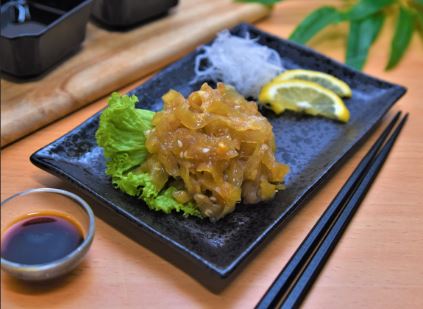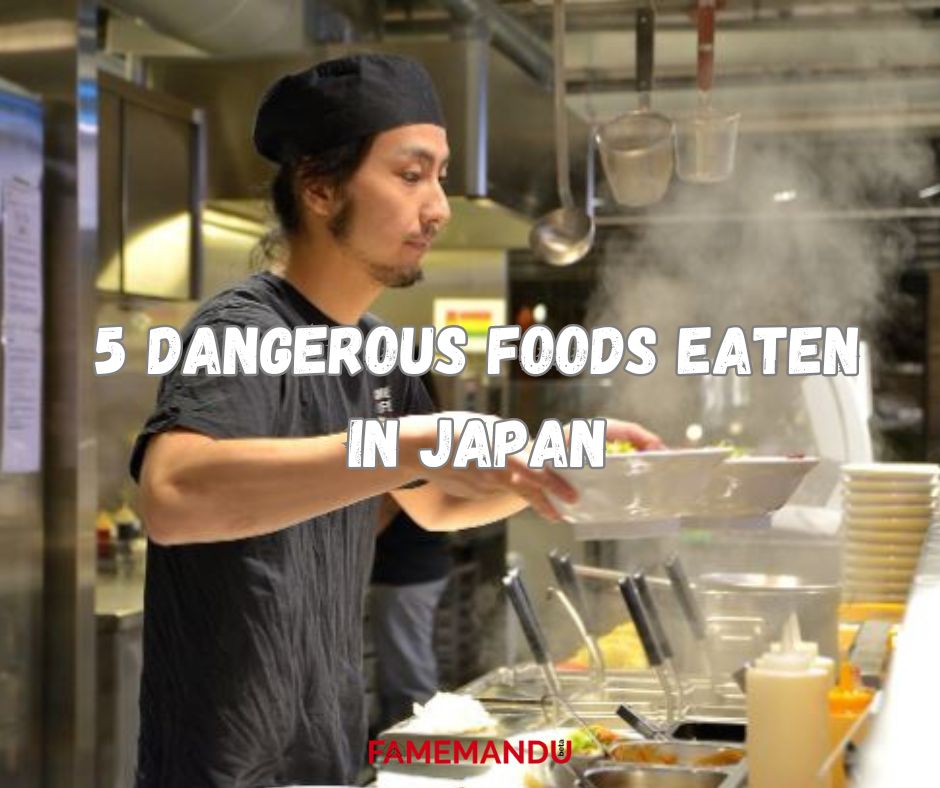1. Fugu
Fugu, the Japanese term for pufferfish, is a dangerous but much appreciated meal. Because the fish’s organs contain the powerful neurotoxin tetrodotoxin, preparing it calls for the expertise of a trained and certified chef. To ensure safety, chefs carefully eliminate any harmful components. Fugu’s toxicity presents a risk that adds to the excitement of eating it. The fish is a sought-after gastronomic experience because of its unusual capacity to inflate itself, as well as its peculiar taste and texture. A poor preparation of fugu, on the other hand, might cause paralysis or even death, emphasizing the fine line that separates culinary exploration from possible danger. Humans eat for cultural rituals, nourishment, and enjoyment. The process of eating gives the body the vital nutrition and energy it needs. Furthermore, meals frequently serve as social and cultural gathering places where people get together to share experiences.
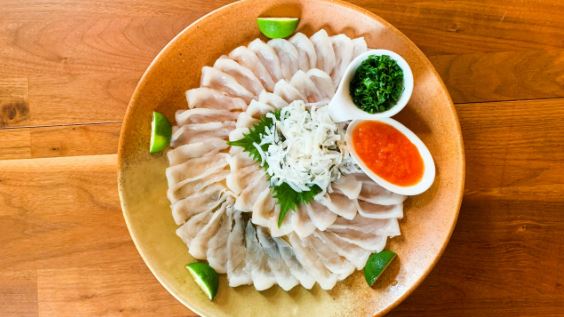
2. Habushu
“Habushu” is the name given to a traditional Okinawan alcoholic beverage that contains venom, specifically the habu snake that is native to the area. The beverage is occasionally referred to as “snake’s sake” or “habu sake.” It’s thought that the alcohol dissolves the venom of the habu snake, protecting drinkers from damage. In traditional Okinawan folklore, habushu is frequently regarded as a distinctive and strong libation with supposed health advantages. It is thought that the wine infused with snakes has characteristics that boost vigor. Although habushu can be found in several locations in Okinawa and other regions of Japan, it has become fairly famous due to its unusual and contentious qualities. Animal welfare problems have led to ethical questions about the production and selling of habushu, and laws are in place to guarantee ethical behavior.
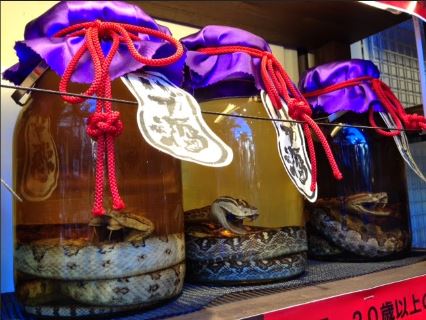
3. Shirako
The Japanese treat known as shirago is made from the milt or sperm sacs of fish, usually pufferfish, anglerfish, or cod. Shirako is valued for its creamy, custard-like texture despite its peculiar provenance. The dish can be made in a number of ways, including tempura or as a topping for sushi, but it is usually served raw. Shirako’s delicate flavor and silky consistency make it a popular ingredient in Japanese cooking, despite its unsettling look. It is regarded as a seasonal treat and is preferred by those with daring palates who value the wide range of Japanese culinary specialties.

4. Senbei Wasp Cracker
Senbei Wasp Cracker is a unique Japanese snack that incorporates wasps into the traditional rice cracker, known as senbei. The preparation involves mixing crushed wasps into the rice flour and seasoning mixture before baking or frying. The wasps contribute a distinct umami flavor and add a crunchy texture to the cracker. This unconventional snack has cultural roots in some regions of Japan, where consuming insects is considered a source of protein. While the idea of eating wasps may be unusual to some, Senbei Wasp Crackers showcase the diversity and creativity found in Japanese cuisine, reflecting a willingness to explore unconventional taste experiences.
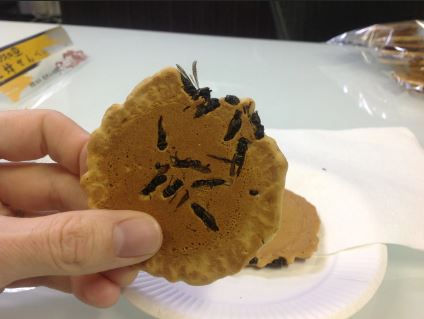
5. Kurage
Kurage, a sea animal with a translucent, gelatinous body, is sometimes referred to as “jellyfish” in Japanese. Jellies come in many different kinds and can be found in oceans all over the world. Kurage is a common ingredient in Japanese cuisine. Kurage is traditionally made in Japanese culinary traditions by marinating it in a dressing made of soy, which results in a crisp and flavorful meal. The dish is well-liked for its distinct texture and mild, slightly saline flavor, and is frequently served as an appetizer or side dish. In addition to being used in food, jellyfish are important marine ecosystem inhabitants, and their populations can change depending on the surrounding conditions.
